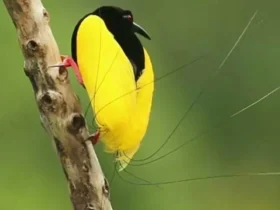Amazon parrots are a group of colorful and intelligent parrots native to the Americas. There are numerous species and subspecies of Amazon parrots, each with its own distinct characteristics and range.
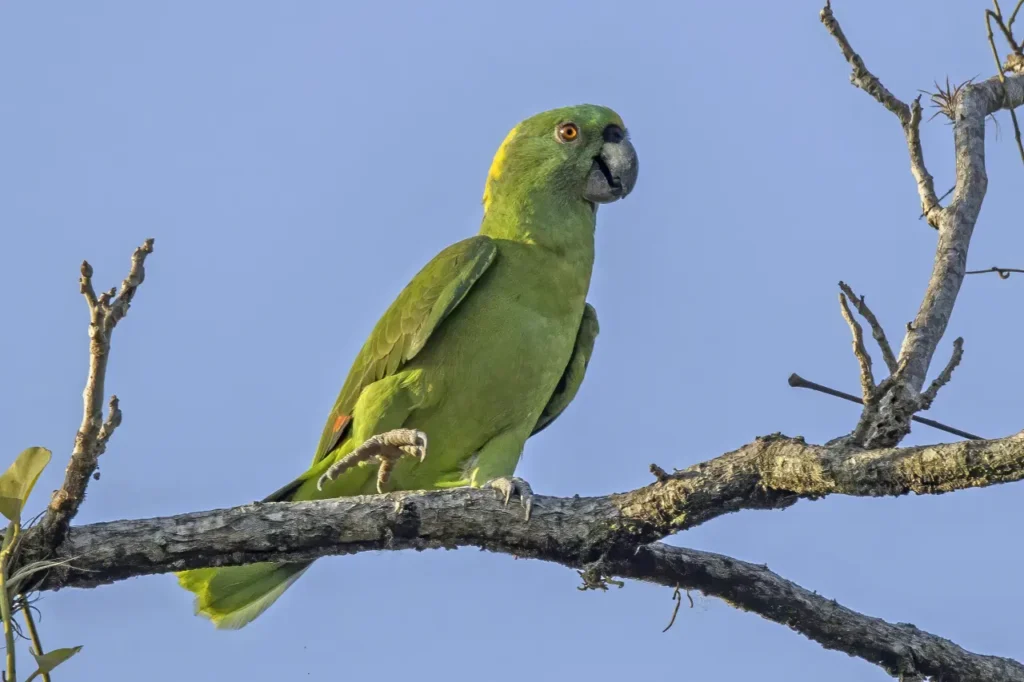
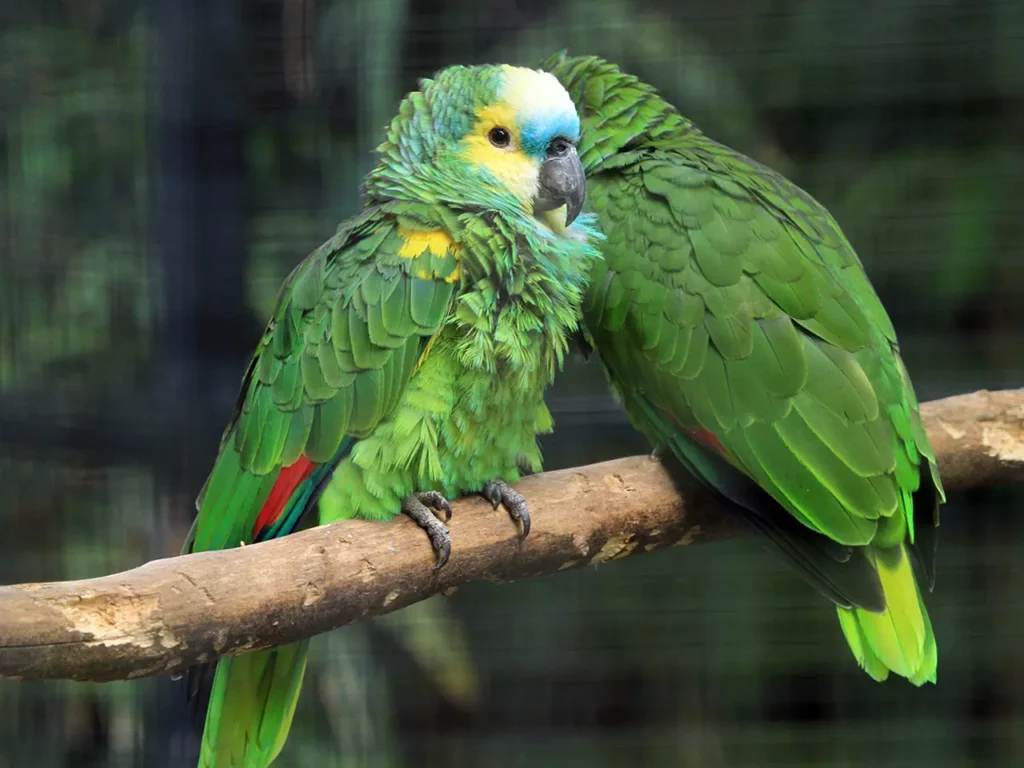
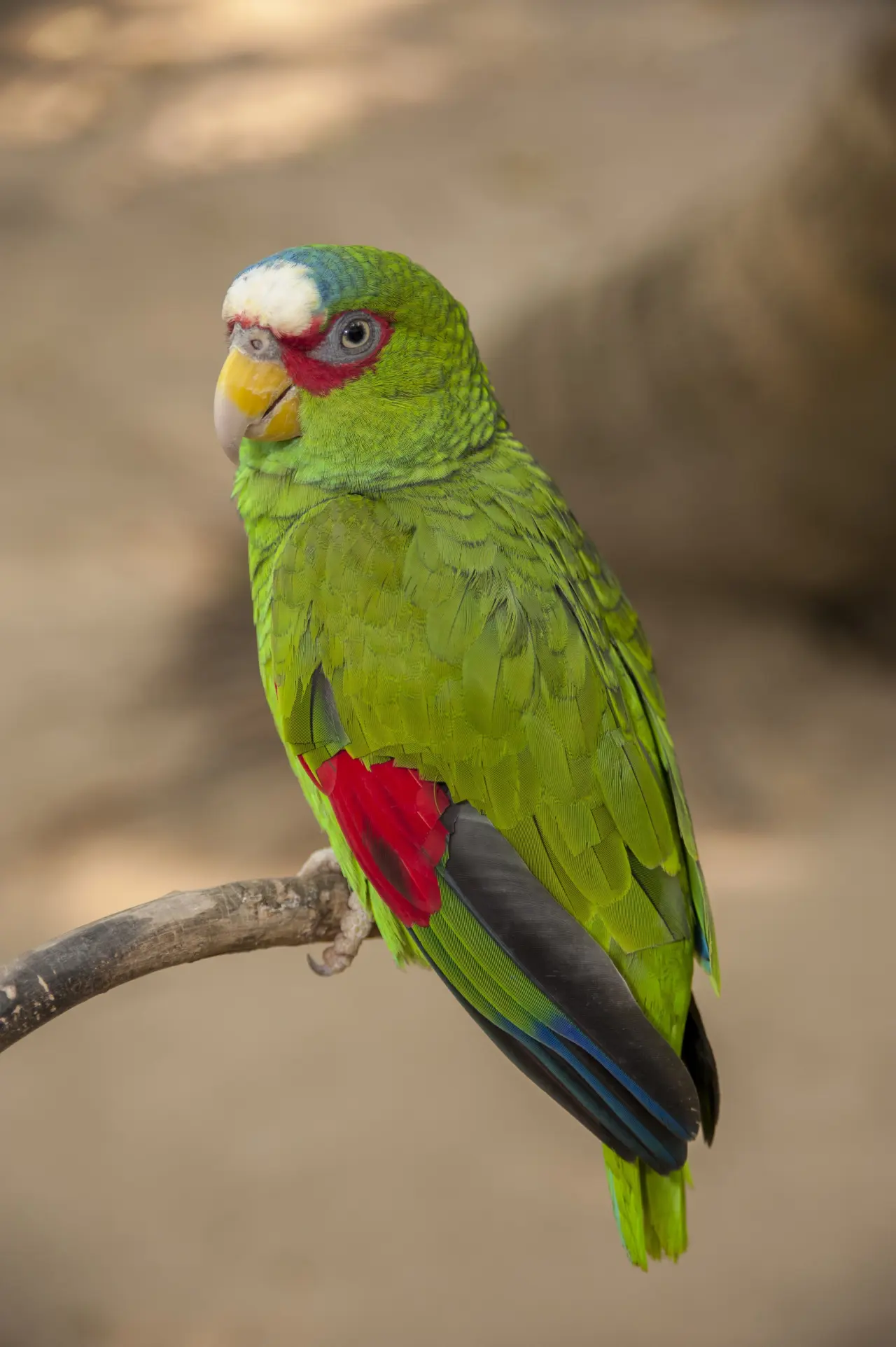
Here are some of the most well-known types of Amazon parrots:
- Yellow-headed Amazon (Amazona oratrix): Recognized by its vibrant yellow head and green body, this species is native to Central America and northern South America. It’s known for its excellent talking abilities and social nature.
- Blue-fronted Amazon (Amazona aestiva): This species has a blue forehead, yellow face, and green body. It’s native to South America and is one of the most popular Amazon parrots kept as pets due to its playful and affectionate personality.
- Double Yellow-headed Amazon (Amazona ochrocephala oratrix): Similar to the Yellow-headed Amazon, this subspecies has a distinctive double yellow head and is native to Mexico and Central America.
- Lilac-crowned Amazon (Amazona finschi): Found in Mexico and Central America, this species has a lilac-colored crown, green body, and red markings on its wings.
- Red-lored Amazon (Amazona autumnalis): Native to Central and South America, this species has a red patch on its forehead and is known for its varied vocalizations.
- Yellow-naped Amazon (Amazona auropalliata): Recognized by the yellow patch on its nape, this species is native to Central America and is valued for its talking ability and friendly demeanor.
- Mealy Amazon (Amazona farinosa): Also known as the Blue-crowned Mealy Amazon, this species has a blue crown and is found in Mexico, Central America, and northern South America.
- Puerto Rican Amazon (Amazona vittata): Endemic to Puerto Rico, this critically endangered species is known for its striking green plumage and distinctive white rings around its eyes.
- Cuban Amazon (Amazona leucocephala): This species is native to Cuba and the Bahamas and is recognized by its white forehead and bright green body.
- Hispaniolan Amazon (Amazona ventralis): Found on the island of Hispaniola, this species has a unique pattern of yellow and green feathers on its face and body.
- Yellow-shouldered Amazon (Amazona barbadensis): Native to the coastal regions of Venezuela and nearby islands, this species has a yellow patch on its wings and shoulders.
- Imperial Amazon (Amazona imperialis): This large and rare Amazon parrot is found in parts of the Dominican Republic and Haiti and has a distinctive violet-blue plumage.
- Red-spectacled Amazon (Amazona pretrei): Native to parts of South America, including Brazil and Argentina, this species has a red patch around its eyes and a green body.
- White-fronted Amazon (Amazona albifrons): Found from Mexico to Central America, this species has a white patch on its forehead and is known for its lively personality.
- Black-billed Amazon (Amazona agilis): This species is native to Jamaica and is recognized by its black bill and vibrant green plumage.
- Red-necked Amazon (Amazona arausiaca): Found in parts of the Caribbean, including Dominica and Guadeloupe, this species has a distinctive red patch on its neck.
- Yellow-billed Amazon (Amazona collaria): Native to Jamaica, this species is recognized by its yellow bill and green plumage.
- Vinaceous-breasted Amazon (Amazona vinacea): This species is found in parts of South America, including Brazil and Paraguay. It has a vinaceous or wine-colored patch on its breast.
- Green-cheeked Amazon (Amazona viridigenalis): Native to Mexico and Central America, this species has a green cheek patch and is known for its playful and affectionate nature.
- Scaly-naped Amazon (Amazona mercenarius): Found in the Caribbean, this species is recognized by its scaly pattern on the nape and neck.
- Red-tailed Amazon (Amazona brasiliensis): This species is native to Brazil and is characterized by its red tail feathers and green plumage.
- Orange-winged Amazon (Amazona amazonica): Found in South America, including parts of the Amazon rainforest, this species has orange feathers on its wings and is known for its cheerful calls.
- Salvins Amazon (Amazona salvini): Native to parts of Central America, this species has distinct green and blue plumage with red markings around the eyes and nape.
- Red-browed Amazon (Amazona rhodocorytha): Found in northern South America, including parts of Venezuela and Colombia, this species has a red patch on its forehead and striking green plumage.
- Blue-cheeked Amazon (Amazona dufresniana): This species is native to the northern part of South America, including Venezuela, and is recognized by its blue cheek patches.
- Yellow-crowned Amazon (Amazona ochrocephala): This species is distributed throughout Central and South America and has a yellow crown and green plumage.
- Red-crowned Amazon (Amazona viridigenalis): Also known as the Green-cheeked Red-crowned Amazon, this species has green plumage and a red crown.
- Panama Amazon (Amazona ochrocephala panamensis): This subspecies of the Yellow-crowned Amazon is found in Panama and has distinctive yellow plumage.
- Saint Vincent Amazon (Amazona guildingii): Native to Saint Vincent and the Grenadines, this species has green plumage and a blue crown.
- White-chinned Amazon (Amazona albifrons nana): This subspecies of the White-fronted Amazon is found in northern South America and has a white chin patch.
- Blue-winged Amazon (Amazona aestiva xanthopteryx): This subspecies of the Blue-fronted Amazon has distinctive blue wing feathers and is found in parts of South America.
- Yellow-lored Amazon (Amazona xantholora): Native to Colombia and Ecuador, this species has a yellow patch on its forehead and is recognized by its green plumage.
- Red-tailed Amazon (Amazona brasiliensis): This species is native to parts of Brazil and has a red tail and green body.
- Yellow-bellied Amazon (Amazona collaria): Found in Jamaica, this species has a yellow belly and green plumage.
- Venezuelan Amazon (Amazona barbadensis): Native to Venezuela, this species has green plumage and a distinctive yellow patch on its wings.
- Saint Lucia Amazon (Amazona versicolor): Found on the island of Saint Lucia, this species has a unique coloration with green and purple plumage.
- Black-billed Amazon (Amazona agilis): This species is native to Jamaica and has a black bill and vibrant green plumage.
- Yellow-tailed Amazon (Amazona tucumana): Native to parts of Argentina, this species has a yellow tail and green plumage.
- Red-billed Amazon (Amazona brasiliensis): Also known as the Brazilian Red-billed Amazon, this species is found in Brazil and has a red bill and green plumage.
- Diademed Amazon (Amazona diadema): Native to parts of South America, including Brazil and Peru, this species has a unique diadem-like pattern on its forehead.
- Bodin’s Amazon (Amazona bodini): This species is native to Mexico and has green plumage with distinctive red markings around the eyes and nape.
- Red-crowned Parrot (Amazona viridigenalis): Also known as the Green-cheeked Parrot, this species has green plumage and a red crown.
- Yellow-browed Amazon (Amazona ochrocephala): This species is found in Central and South America and has a yellow crown and green plumage.
- Brown-throated Parrot (Amazona palmarum): Found in parts of Central America and the Caribbean, this species has green plumage with a brown throat.
- Honduran Red Amazon (Amazona autumnalis): Also known as the Red-fronted Amazon, this subspecies is found in Honduras and has a red patch on its forehead.
- White-fronted Amazon (Amazona albifrons): This species is found from Mexico to Central America and has a distinctive white patch on its forehead.
- Yellow-faced Amazon (Amazona xanthops): Native to Peru and Bolivia, this species has a yellow face and green plumage.
- Tucuman Amazon (Amazona tucumana): Found in Argentina, this species has a green body and is recognized by its distinct call.
- Black-capped Amazon (Amazona agilis nana): This subspecies of the Black-billed Amazon is found in Jamaica and has a black cap on its head.
- Grenada Amazon (Amazona versicolor): Endemic to Grenada, this species has unique green and purple plumage.
- Guadeloupe Amazon (Amazona violacea): Native to Guadeloupe, this species has distinctive violet plumage.
- Cuban Amazon (Amazona leucocephala): Found in Cuba and the Bahamas, this species has white plumage on its forehead and is recognized by its green body.
- Black-cheeked Amazon (Amazona festiva): This species is native to parts of South America, including Colombia and Ecuador, and has a distinctive black cheek patch.
- Santarem Amazon (Amazona festiva): Also known as the Festive Amazon, this species is found in parts of South America and has a festive combination of colors.
- Margarita Island Amazon (Amazona barbadensis): Endemic to Margarita Island, this species has green plumage and is recognized by its distinctive call.
- Yellow-winged Amazon (Amazona aestiva): This subspecies of the Blue-fronted Amazon has yellow wing feathers and is found in parts of South America.
- St. Vincent Amazon (Amazona guildingii): Found in St. Vincent and the Grenadines, this species has green plumage and a blue crown.
- Tobago Amazon (Amazona guildingii): Endemic to Tobago, this species is recognized by its green plumage and blue crown.
- Bermuda Amazon (Amazona prasina): This species is found in Bermuda and has green plumage with blue markings.
- Island Amazon (Amazona ventralis): Endemic to the island of Cozumel in Mexico, this species has a unique pattern of yellow and green feathers on its face and body.
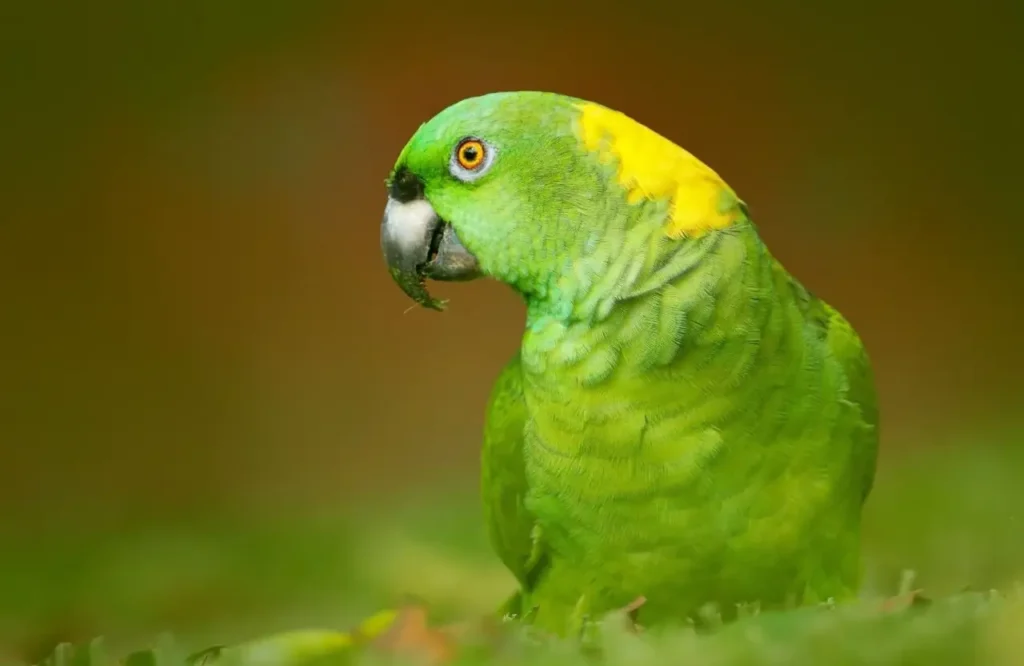
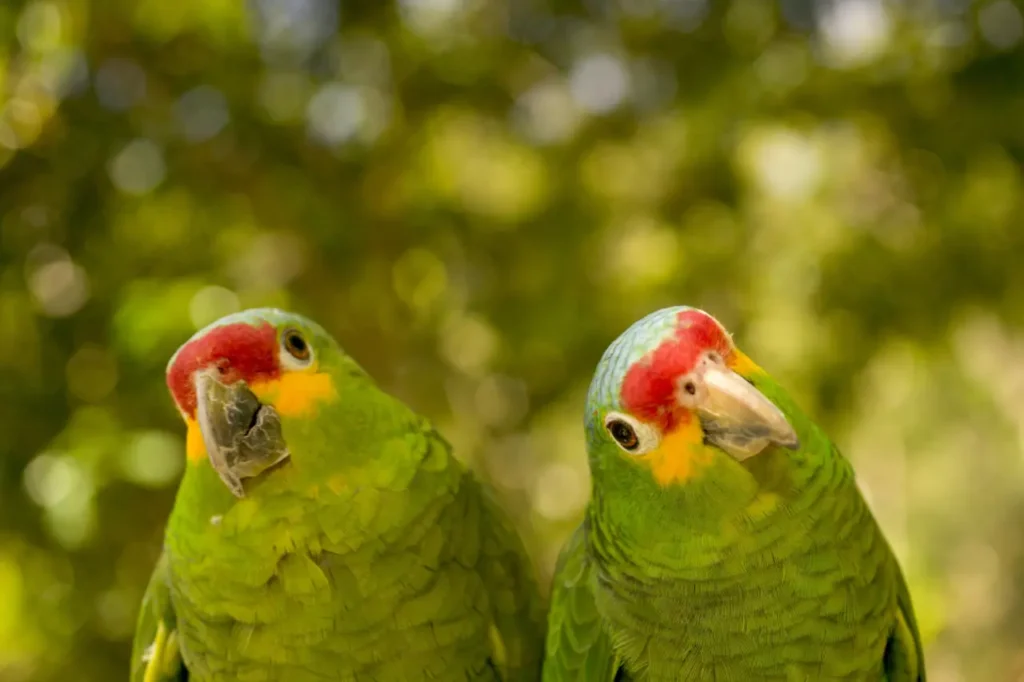
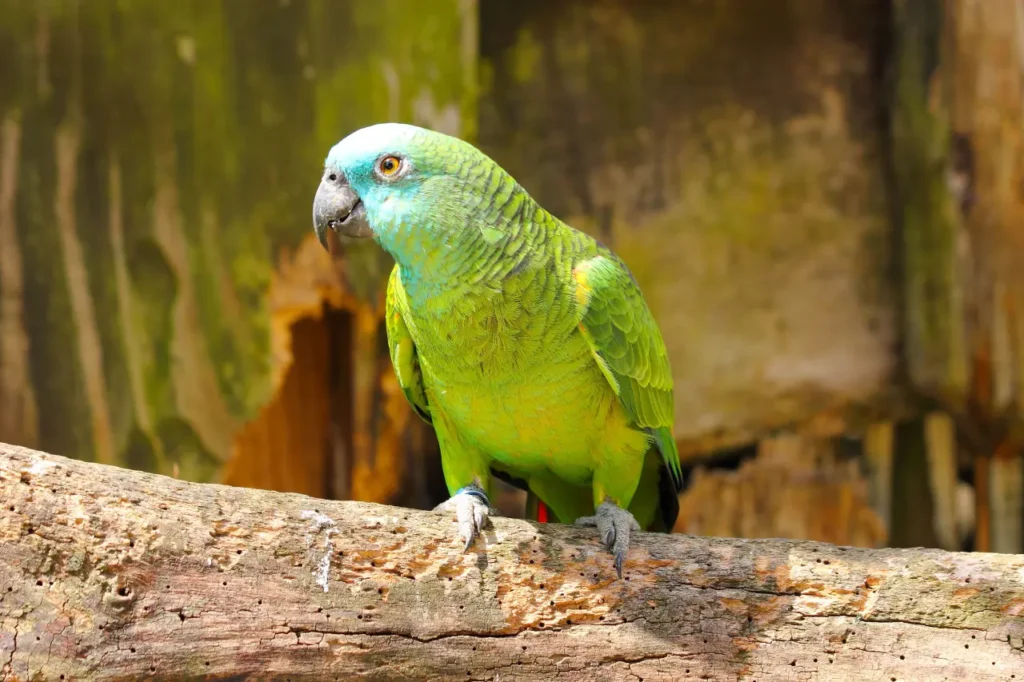
These are just a few examples of the diverse and captivating Amazon parrot species. Each species has its own unique characteristics, behaviors, and habitat preferences. It’s important to note that many Amazon parrot species are protected due to conservation concerns, so it’s important to support ethical practices when considering them as pets.
